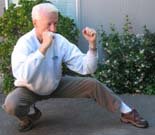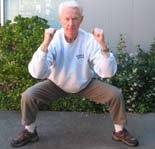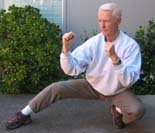In my book for senior beginners, I explain a straight line progression plan for building strength and fitness. You begin lifting a weight you can manage without straining for 12 repetitions. At your next training session, you do 13 reps. Then 14 at the following workout, and, finally, 15.
Then you add 5 to 10 pounds to the bar, go back to doing 12 reps, and begin the progression over again. It works in a similar way with cardio. Say that you choose walking. At each workout, you add some minutes to your total. That is how classic straight line strength and fitness progression works.
It is a solid beginner's plan — for a while. But eventually, you hit a wall. Call it what you want, a “sticking point,” a “plateau,” or whatever. If you simply try to push through it while doing the same things in the same way, you inevitably experience physical or psychological burnout.
The great Russian weightlifters realized this long ago and came up with an effective training protocol known as periodization. It works, more or less, like the following:
For 4 or 5 weeks, they trained with rather light weights (light for them anyway), doing 10 to 20 reps per set.
• Then during the next 4 weeks, they did medium reps per set (5 to 8 reps) with heavier weights.
• Finally, they would do low reps (2 or 3 per set) with heavy weights for a few weeks, culminating in a competition.
• After the competition, they would do 1 or 2 weeks of “active rest,” doing some kind of non-lifting type of exercise such as running, swimming or cycling.
Following the active rest period, they would begin another cycle.
You may not be a power lifter; nevertheless, once you have progressed beyond the beginner stage, all training, whether it is for a particular sport, bodybuilding, or general conditioning, should follow a somewhat similar format of 1) gradual buildup, 2) peaking, and 3) active rest.
Why? Because no one can continually push to the limit at every workout and make progress. While on the subject, it should be noted that Russian lifters do not train to failure. Total, all out efforts are reserved for competitions only. Most of us are not in competitions. Still the principle remains the same. Test your limits once in a while, but trying for a personal best at every workout only leads to dreading your training, injury and or eventual failure.
Train with variety. Mix it up. Change your routine. Do high reps for a while. Then switch to medium reps with heavier weights. For cardio, push to better yourself for a while. Add some sprints. Then back off and do something different and with less intensity for a couple of weeks.
You will not only make greater progress, you will enjoy training more.



